My Literacy Centers Were a Problem
My first attempts at literacy centers were disastrous. I dreaded this part of the day. I attended workshops, spent time teaching my students how to act during center time, and taught them how to complete each center. Other teachers made it work. Why couldn’t I figure it out? In other classrooms, students were politely working in small groups with some kind of laminated sorting game or board game. The students all seemed to know exactly what to do and get along perfectly while the teacher taught her small reading group. How did they make this happen? When did they find time to make and teach these beautiful centers each week?
Then there was the rotation. After each reading group the timer would ring, chaos and confusion would ensue in my classroom. The perfect teacher would call her next group, and within a few minutes everything was cleaned up and students were in their new location. Magic. And I couldn’t figure out how to make it happen. Since traditional literacy centers weren’t working for me, I took a few ideas from other places put them together, and came up with what worked for me and my students.
What exactly was my problem? I had a few. First, My literacy centers were not differentiated. The work was too easy for some students and too difficult for others. One year I had an inclusion class with two students reading at a kindergarten level, one student reading at a sixth-grade level, and the rest of the class was reading at every level in between.
Another problem was that I would take the time to make these beautiful centers and then the students had to learn how to do each center. By the time we all had it figured out, it was time to change out the centers for the week. It simply took too long to teach how to complete each center.
Finally, I had no way of holding students accountable for their work. Students would go to a center and look busy, but what were they really doing?
Here’s a list of why I was struggling to make my literacy centers work. Do any of these sound familiar?
- Not enough time to make and change the games and activities in each center.
- No time to teach new literacy center activities each week.
- Literacy centers are not differentiated and appropriate for all students.
- No way to hold students accountable for their work.
- Students had different amounts of time because some worked with the special education teacher or interventionist.
- As the teacher, I had to manage the time each student spent at each literacy center.
- Some students preferred to work independently.
The Powerful Strategy I Use for Literacy Centers
My solution – a very narrow literacy menu. What is a literacy menu? It is a chart of literacy activities that students complete throughout the week. A literacy menu allows students to choose the order in which they complete activities. This addressed many of the problems that I had with traditional literacy centers as well as some other problems.
The best feature of using a literacy menu is that I can hold students accountable for their work. The “menu” acts as a cover page and checklist of activities that need to be done for the week. All of the students’ work is attached to the cover page.
Another great feature of literacy center menus is that students work at their own pace. Some students will finish their work within a day or two and it will take other students the entire week to complete their work. Keep reading to find out how to differentiate Literacy Center Menus.
The final perk of literacy center menus is that students can work in small groups or independently. This is great because some students prefer to work alone, while others need to work alone. It also allows for the flexibility of students choosing their own small groups.
Here is an example of a Visual Literacy Center Menu for lower elementary students. You can see an example of an upper elementary literacy center menu in the picture below.
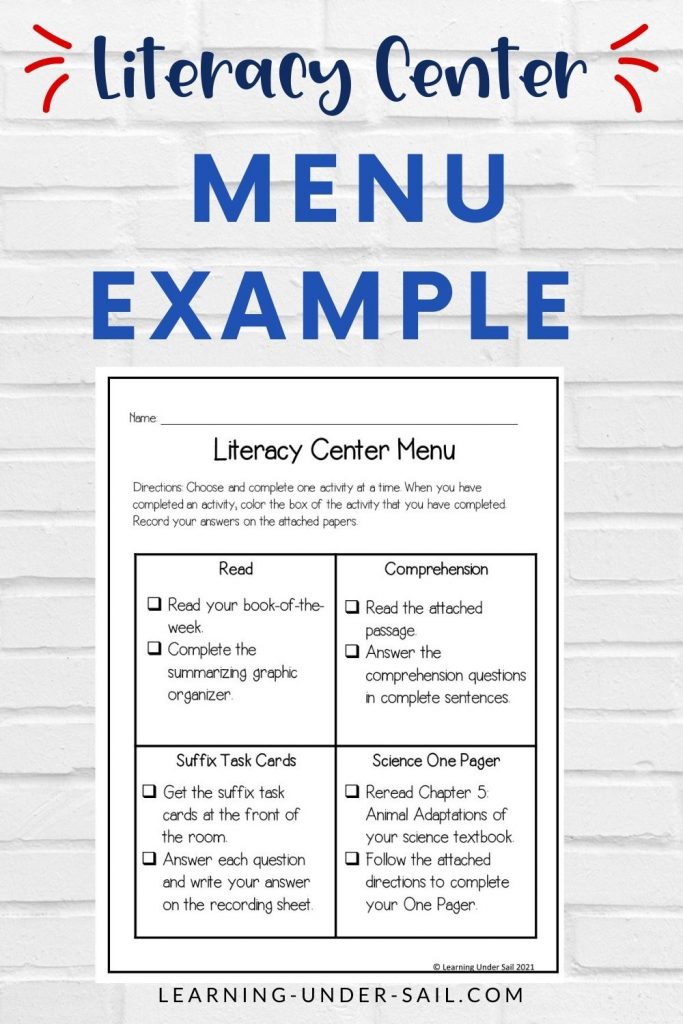
Why do I call my literacy center menu narrow?
With some literacy center menus, students chose and complete a certain number of tasks, leaving some tasks unfinished. I expect my students to complete all of the activities on the menu within the week. This is the best way that I can hold them accountable for completing their work in a reasonable amount of time. It also reduces student overwhelm and the amount of time that it takes for students to chose which activity to complete first.
Here are the general literacy center menu rules for my students.
- Once you choose an activity, you must complete it before moving on to the next activity.
- You are responsible for your menu Monday-Friday and it must be turned in on or before Friday.
- You may work independently or in groups of two or three.
- You may talk quietly.
- This is independent time. Independent = solve your own problem. If you don’t know what to do, find someone in the classroom who can answer your question or wait until I transition between reading groups.
What do I include in my weekly literacy center menus?
I ask myself three questions when I am considering what to put in my literacy centers.
Is it authentic?
Is it novel and engaging?
Is it a skill that we have covered that students should be able to do independently?
If I can answer yes to two out of the three questions, the activity will likely make it onto the menu.
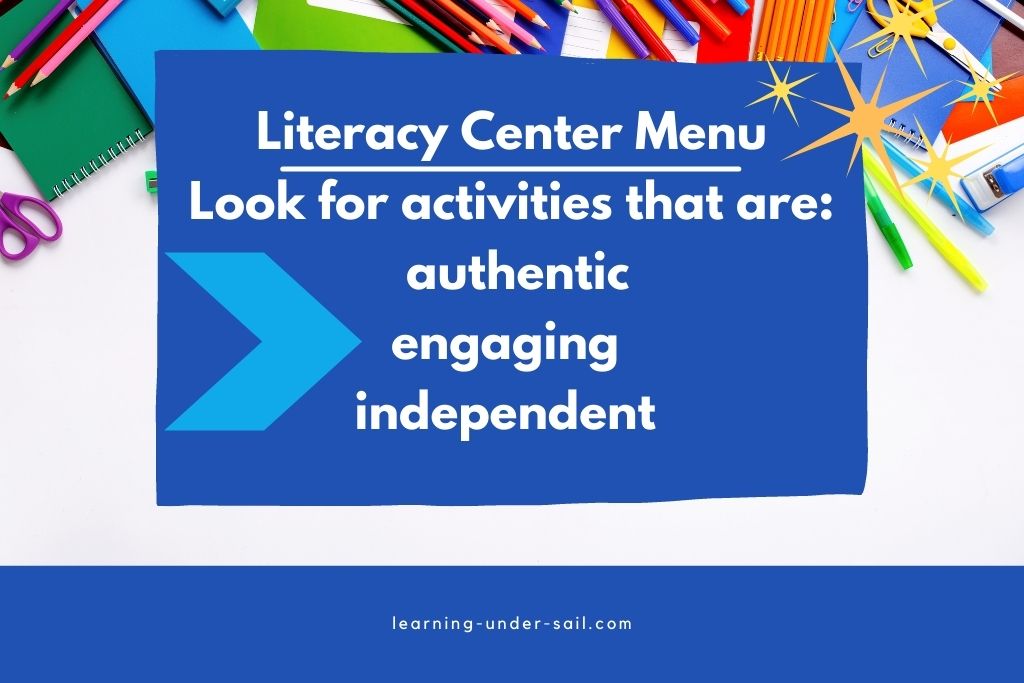
I usually include these four types of activities:
- Read a book on your level and complete a reading response ticket.
In this case, the book should be self-selected by the student. I am lucky that our school library’s books are color-coded with levels, so students can easily find a book of interest to them on their level. Reading response tickets can take many forms. Think about a graphic organizer that you used recently or check out these 15 Creative Reading Comprehension Exit Ticket Ideas.
- Short, grade-level nonfiction passage with open response questions
We start the year with a nonfiction short passage or paragraph and then who, what, when, where, and why questions. Students must justify their answer in the text and write the correct answer to the open response question. Later in the year we will move to slightly longer passages and focus on nonfiction text features. This How to Read a Diagram activity from The Mailbox is one of my favorite activities for the middle of the year. After allowing students to work on this activity for the week, I will turn it into a small-group lesson for my lower groups on Thursday or Friday.
- Skill-based cut, paste, and/or color activity
Third, fourth, and fifth graders still like to mix it up by cutting, gluing, and coloring. There are many activities out there that are grade-level appropriate. I look for skills that we have covered. The Mailbox is one of my favorite resources for these activities. You can print a certain number of pages for free each month, but a paid subscription is only $2.99/month. I also have cut, paste, and color activities in my TpT store.
- Extra literacy activity
In the past I used file folder games with recording sheets for my extra literacy activity but…they are not available anymore. If you can find some quality file folder activities for upper elementary, they are a great activity for literacy centers.
Another activity that works well in literacy centers is creating One-Pagers. I give very specific directions about what is required of each one-pager and I also provide my students with a reading passage or textbook pages to go with the assignment. This is also a great place to tie in science or social studies content. Read more about One-Pagers here.
A third awesome activity for this literacy center is using task cards with a recording sheet. Don’t include too many task cards at this center because you want students to be able to finish all of the cards in a reasonable amount of time. My favorite task cards on TpT are from Teaching with a Mountain View and task cards are also included in my Literacy Center Menu Activities in my TpT store.
What my students are NOT doing
A Literacy Center Menu is NOT busy work. All classwork should be moving your students toward some type of authentic reading or writing activity. Here are some examples of what is not included in my weekly literacy center menus.
- Looking up words in a dictionary
- Doing word searches
- Answering multiple-choice questions
- Activities or games that have no recording sheet for accountability
- Random daily reviews that cover several skills
- Listening to a recorded story instead of reading it
- Playing games on the computer
- Spelling word activities
- Writing sentences with spelling or vocabulary words
There can be a time and a place for the activities listed above, but I don’t include them in my literacy centers.
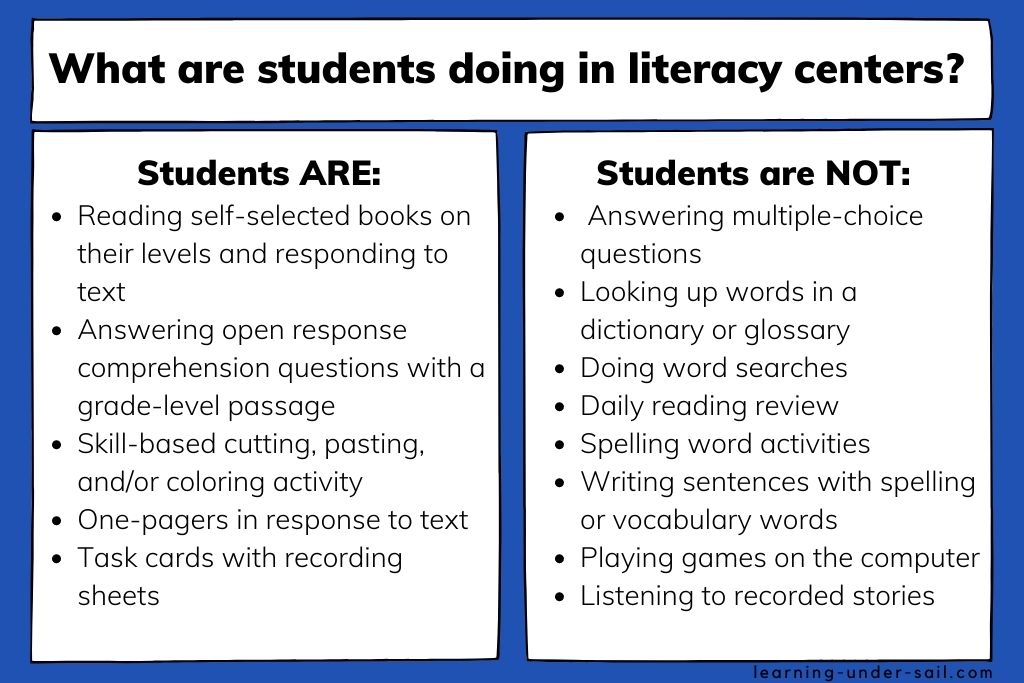
How To Differentiate Literacy Centers For All of Your Students
Depending on your class, it is likely that one literacy center menu will not be appropriate for all of your students. I make two versions of my menus – a full version with four activities and a shortened version for students who go to two reading groups each day. For example, some of my students would come to my reading group and then go to a reading group with the interventionist. They do not have as much time to work as students who only go to one reading group and these students are often working below grade level, so they need a little extra consideration. Students who only have two activities on their menu can always work on the other two activities when they finished their assigned activities; however, I only grade the first two assigned activities.
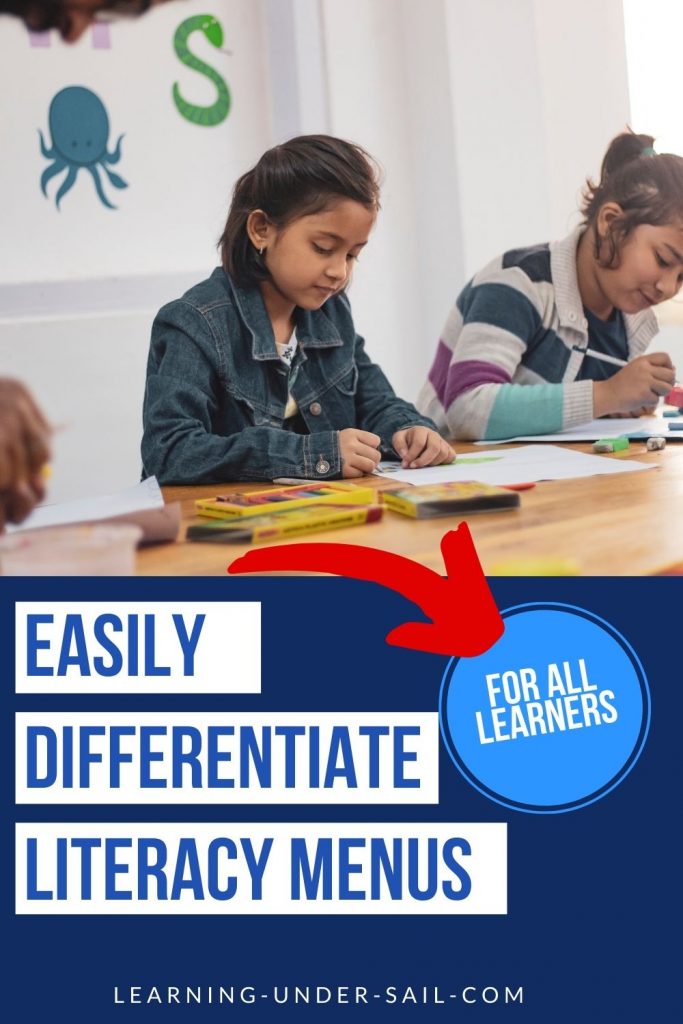
- Give students fewer activities
I only assign two activities instead of four to my students who go to more than one reading group. Depending on the situation, I might also eliminate activities for a student who has been absent for several days. Students work at different paces, so if a student is consistently not finishing his/her work, decide if the amount of work is appropriate for that student.
- Only give students one activity at a time
Four activities can be overwhelming for some students, so I’ll have them cut their four menu activities into four separate sheets of paper. Then the student will get one activity and complete it before getting the next activity. In this case, the student would not hold the literacy center folder at his/her desk, but in a special place where it can be monitored.
- Peer buddy
I like to pair a peer buddy with the student who only gets one activity at a time (see the example above). The peer buddy needs to be organized and responsible, but not necessarily the highest academic achiever in the class.
- Teacher check-in
I check in with all of my students when we start centers at the beginning of the year. I have students bring their menu to their reading group and I just do a quick check and conference with them if they are not making progress. Sometimes I also need to do this later in the year to get students back on track.
- Engaging Activities for fast-finishers and above-level students
All of my students do grade-level work that is assigned to the class, even if they are working above grade level; however, they often finish very quickly. Some even finish on the first day they get their assignments.
What do they do for the rest of the week? It depends on the student and his/her interests. Some students choose to take the time to read a novel. I usually have games available for students who finish their work. Sometimes students enjoy working on logic puzzles and detective activities. The activities vary for this group of students but I still use my three guiding questions – Is it authentic? Is it novel and engaging? Can students do it independently?
If this all sounds a bit overwhelming and you need a place to start, you can find some menus that I created here. Each menu includes a cover sheet, four printable activities, task cards, and a game. These are skill-based menus, so you may want to add an authentic reading activity.
Here are some other blog posts you might be interested in:
Why Upper Elementary Struggling Readers Need to Play Games
5 Tips to Keep Your Intervention Groups Simple
How to Set Up Literacy Centers on the First Day of School in Upper Elementary
What’s your biggest intervention or differentiation challenge? I’d love to hear from you! Tell me in the comments below.
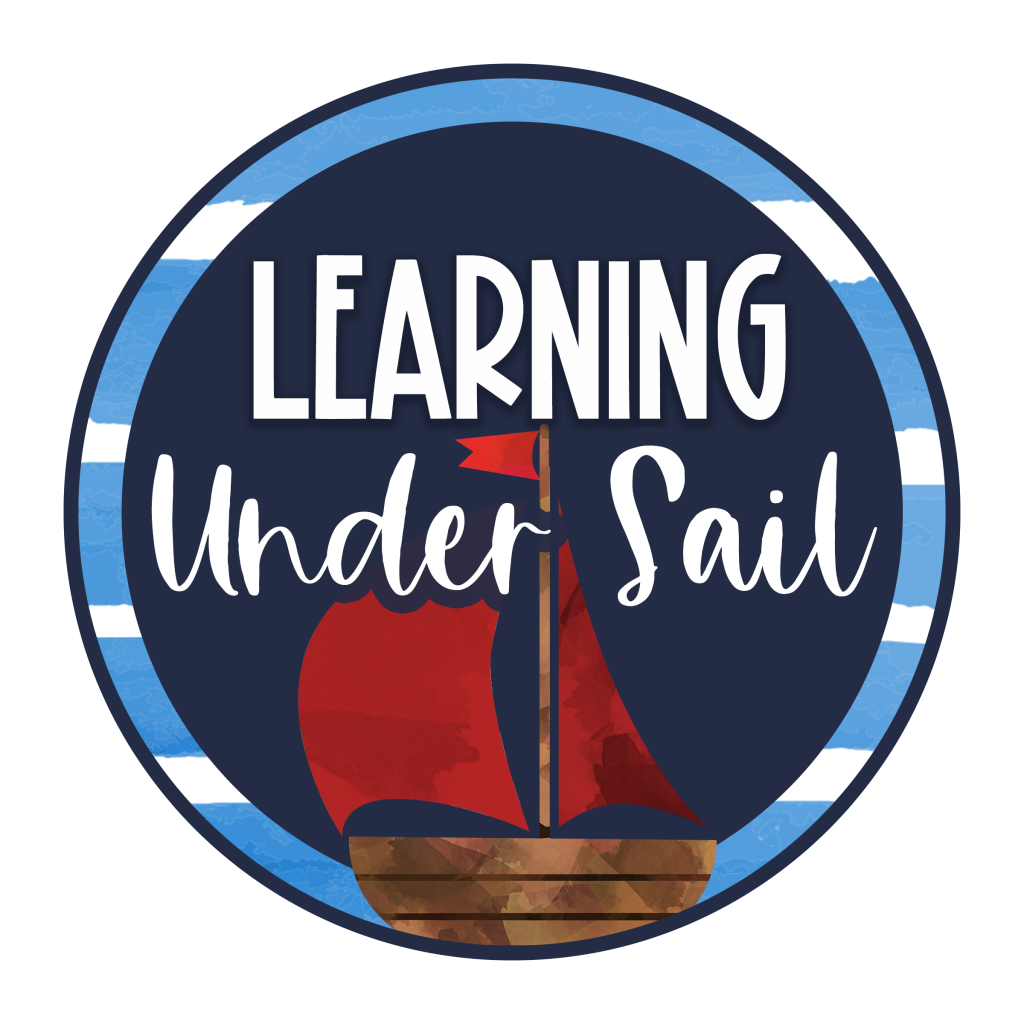

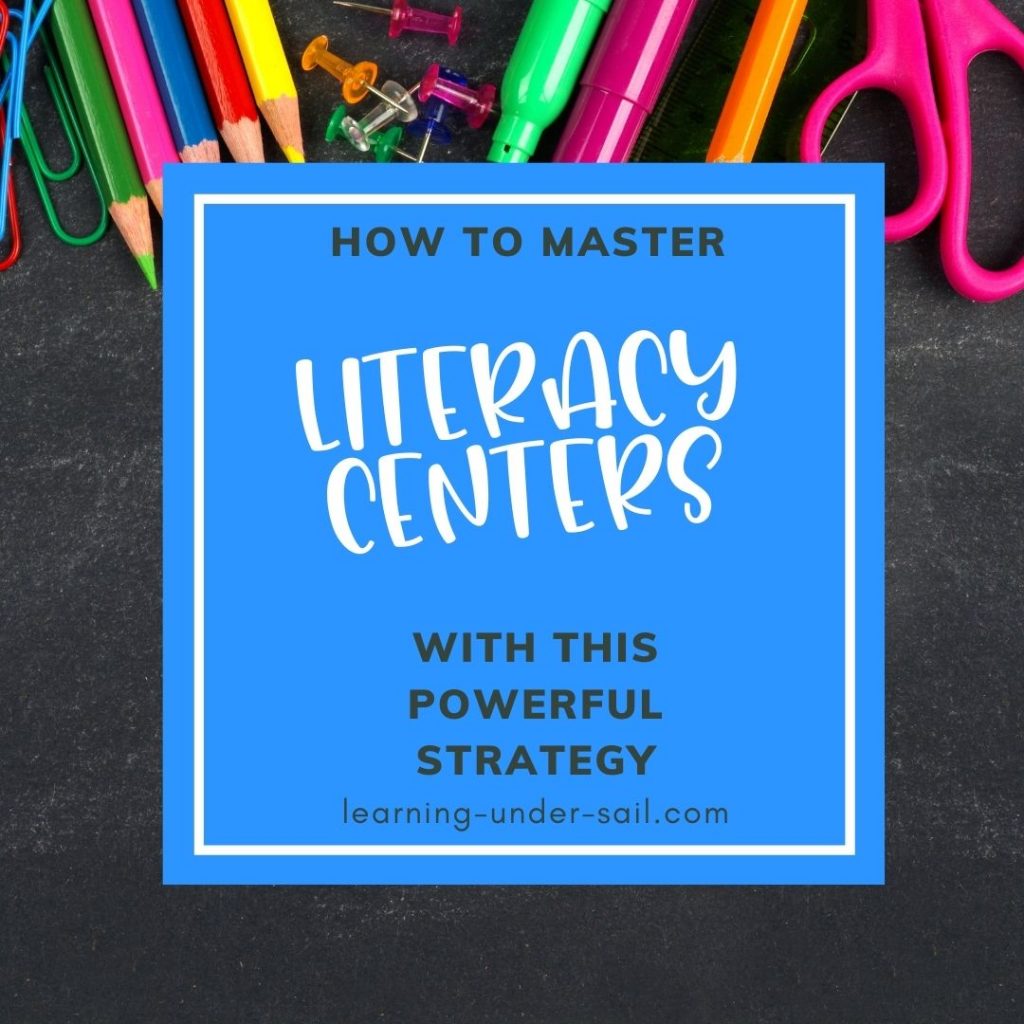
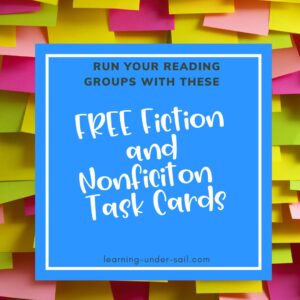
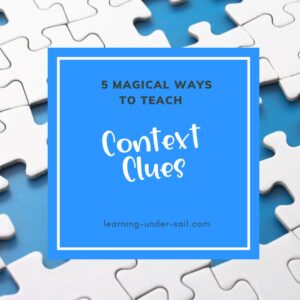
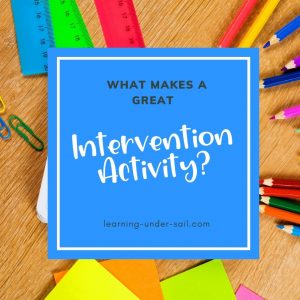

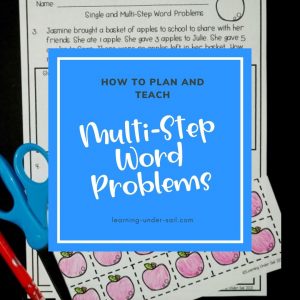
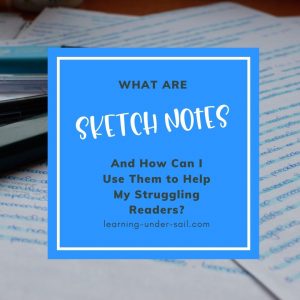

2 Responses